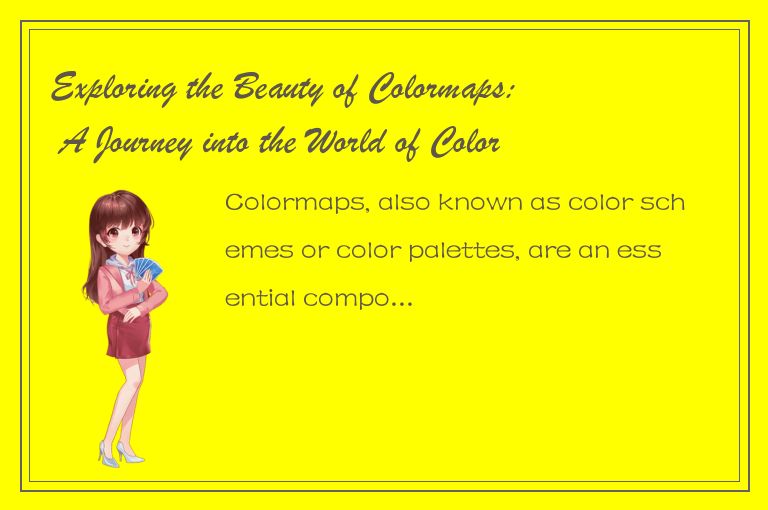Colormaps, also known as color schemes or color palettes, are an essential component of data visualization. They enable us to represent and communicate data in a way that is both informative and aesthetically pleasing. Colormaps work by mapping numerical data onto a range of colors, creating a visual representation that allows us to easily spot patterns and trends.

In this article, we will explore the beauty of colormaps and take a journey into the world of color schemes. We will discuss how colormaps work, explore different types of colormaps, and highlight the importance of choosing the right colormap for your data.
How Colormaps Work
Colormaps work by mapping numerical data onto a range of colors. The range of colors used is often referred to as a color scale. Typically, the colors used in a colormap range from light to dark or from cool to warm. Depending on the nature of the data being represented, different color schemes can be used to highlight different patterns and trends.
For example, if we were to represent temperature data, we might use a red-to-blue colormap that ranges from warm (red) to cool (blue). Alternatively, if we were to represent elevation data, we might use a green-to-brown colormap that ranges from low (green) to high (brown).
Different Types of Colormaps
There are many different types of colormaps, each with its own unique characteristics and use cases. Some of the most common types of colormaps include:
- Sequential colormaps: These colormaps are made up of a range of colors that go from light to dark or cool to warm. Sequential colormaps are often used to represent numerical data that ranges from low to high.
- Diverging colormaps: These colormaps are made up of two distinct color ranges that meet in the middle. Diverging colormaps are often used to represent numerical data that ranges from negative to positive.
- Categorical colormaps: These colormaps are made up of a range of distinct colors that are used to represent different categories. Categorical colormaps are often used to represent qualitative data.
- Hue-based colormaps: These colormaps are based on a particular hue, such as blue or green. Hue-based colormaps are often used to represent data where color is the most important factor.
Choosing the Right Colormap
Choosing the right colormap is an important part of data visualization. The right colormap can help to highlight patterns and trends in your data, while the wrong colormap can obscure or distort your data.
When choosing a colormap, there are several factors to consider. Some of the most important factors include:
- Nature of the data: The nature of the data being represented should be taken into account when choosing a colormap. For example, if you are representing temperature data, a red-to-blue colormap might be a good choice.
- Colorblindness: Approximately 1 in 12 men and 1 in 200 women are colorblind. When choosing a colormap, it is important to take colorblindness into account and choose a colormap that is easily distinguishable by people with colorblindness.
- Color contrast: The contrast between different colors in a colormap can affect how easily patterns and trends can be identified. Colormaps that have high color contrast are generally easier to read and interpret.
- Color aesthetics: Finally, the aesthetic appeal of a colormap should also be considered. While aesthetics should not be the sole factor in choosing a colormap, it is important to choose a colormap that is visually appealing and appropriate for the context in which it will be used.
Conclusion
Colormaps are an essential tool in data visualization, enabling us to represent and communicate data in a way that is both informative and aesthetically pleasing. By understanding how colormaps work and the different types of colormaps available, you can choose the right colormap for your data and create visualizations that are both accurate and visually appealing. So the next time you visualize data, take some time to explore the beauty of colormaps and choose a colormap that best suits your needs.




 QQ客服专员
QQ客服专员 电话客服专员
电话客服专员